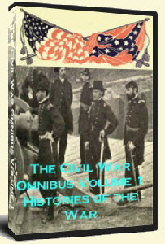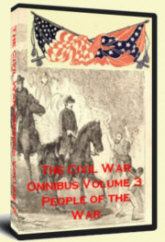The Boys’ War
In 1861, a nine year old boy named John Clem runs away from his Ohio home to attempt to join the 3rd Ohio Volunteer Infantry. He is turned away, as much for his small size as for his age. Undeterred, John Clem tries to join the 22nd Michigan. They also turned him away, but young John was determined; tagging after the 22nd Michigan, the regiment finally relented, and adopted him officially as a drummer boy, unofficially as a mascot. He was allowed to enlist two years later, at the seasoned age of eleven.
John Clem came to national attention, known as the “Drummer Boy of Chickamauga” among his many other titles, pictures and drawings of the small boy in his army uniform, almost like a toy soldier, appearing in national publications until The Little Drummer Boy was almost a household name. Clem became a symbol of the strength and power of the Union – a glorious institution for which even boys were willing to give their lives.
He may have been the best-known, but John Clem was hardly the only boy to serve in the Civil War. He was in good company, company incomprehensible in modern times. Eleven year old soldiers. Thirteen year old soldiers. Fifteen year old soldiers. Boys fighting in some of the most brutal, bloody battles in recorded history.
Popular history concludes that the South produced a large number of these boy soldiers, due to the combined factors of a small population in relation to the North and the devastating effect of high casualties on this smaller population. However, while the South certainly contributed many soldiers of a tender age to the cause, the North did, as well. Statistics vary on the subject, but it has been suggested that in the Federal Army alone, more than 1,000,000 of the soldiers were eighteen or under. Of this 1,000,000, about 200,000 were under the age of 16; of this number, 100,000 were fifteen or under, and of this number, 300 were thirteen or under, and around 25 were ten or under.
Confederate statistics regarding soldiers are even less reliable, but according to Burke Davis in The Civil War: Strange and Fascinating Facts:
(From a sample of about 11,000 Confederate soldiers) there was one of thirteen, and three were fourteen; 31 were fifteen; 200 were sixteen; 366 were seventeen; and about a thousand were eighteen.
Many a brave boy, spurred on by love for their country, or even the publicity that surrounded John Clem’s stint as drummer boy, joined up, either officially or unofficially. Like Clem, many of these boys acted as musicians, particularly drummers or buglers, particularly in the Federal Army. These boys soon found that the job of a musicians, who was often out in front of the infantry, also meant being directly in the line of fire.
While musicians were employed in some of the better-funded regiments, most boys who joined the Confederate Army joined as regular enlisted men.
For the boys both North and South who joined the Army, the conditions were even more dangerous than for the older, more seasoned men who joined. These young soldiers were more prone to the illnesses – often due to hunger, cold, or the filthy living conditions common in the camps – that decimated many of the troops on both sides. Those who survived camp life were often picked off during battle. William Black, who had the distinction of being the youngest soldier wounded during the Civil War, had his left hand and arm shattered by an exploding shell – at the age of twelve.
Many of these boys served in capacities that were a challenge for men twice their age. T.D. Claiborne, a student at the Virginia Military Institute, left the academy in 1861 at the age of 13, and is said to have become the captain of the 18th Virginia soon thereafter. Claiborne was killed in 1864, at the age of 17. In Alabama in 1861, T.G. Bean, organized two companies at the University of Alabama, although he himself did not enter service until he was 15, and then served as adjutant of cadet corps accepted into Confederate armies.
Regardless of whether they fought for the Union or the Confederacy, these children turned soldiers were introduced early on to the harsh reality of war. They experienced the same hardships, the same battles, even the same fate as prisoners of war – these young soldiers were not even spared prison when they were captured – as men old enough to be their fathers and grandfathers.
While many of the boy soldiers who served in the Civil War abandoned military careers after the war, the venerable John Clem did not. He retired from the army in 1916, at the youthful age of 65, the last Civil War veteran still in active service.


